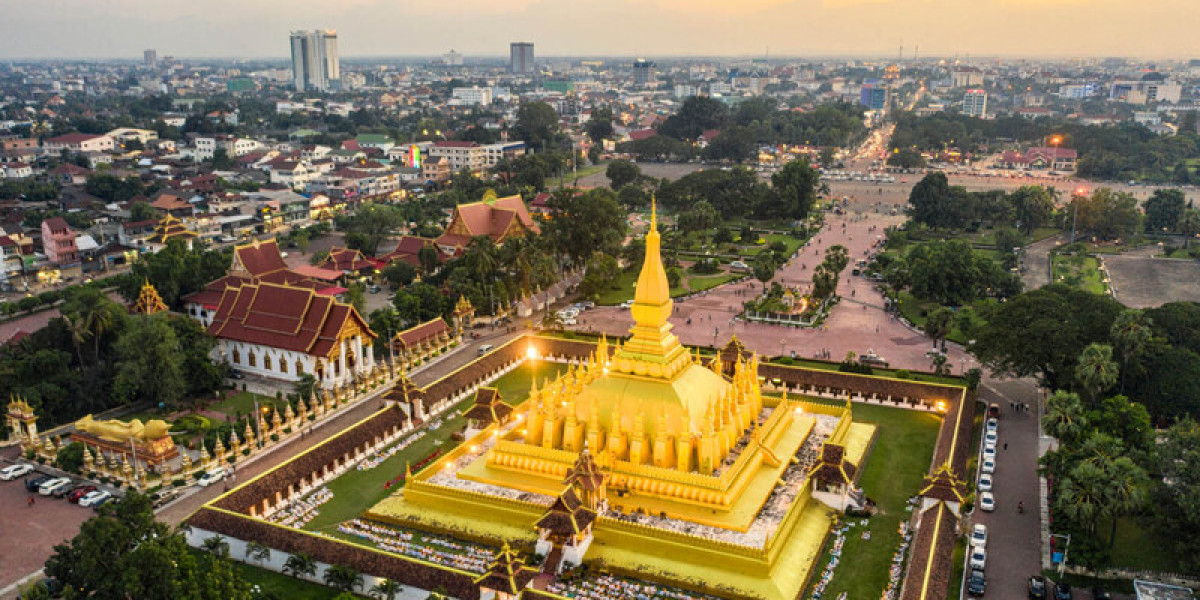Laos, officially known as the Lao People's Democratic Republic (Lao PDR), is a landlocked country nestled in Southeast Asia. With its rich history, stunning natural landscapes, and vibrant culture, Laos is a captivating destination that remains off the beaten path for many travelers. Known as the "Land of a Million Elephants," Laos is a place where ancient traditions and natural beauty converge, creating an unforgettable experience.
Geography and Location
Laos is bordered by China to the north, Vietnam to the east, Cambodia to the southeast, Thailand to the west, and Myanmar to the northwest. The country spans over 230,000 square kilometers and is dominated by rugged mountains, dense forests, and extensive river systems, including the iconic Mekong River, which flows along the western border. The river is not only a vital resource for transportation and agriculture but also serves as the lifeblood of local communities.
The country’s topography is diverse, with highlands, valleys, and plateaus providing a haven for wildlife and adventure-seekers. Laos is home to lush jungles, crystal-clear waterfalls, and caves, making it an ideal destination for eco-tourism and outdoor activities like trekking, cycling, and river cruises.
Capital and Major Cities
Vientiane: The capital city of Laos, Vientiane, is located along the Mekong River and is known for its relaxed pace of life. With a mix of traditional Lao culture and French colonial influences, Vientiane offers a blend of historical sites and modern-day charm. Must-see attractions include the That Luang Stupa, an iconic Buddhist structure, and the Patuxai Victory Monument, a symbol of Lao independence.
Luang Prabang: A UNESCO World Heritage Site, Luang Prabang is one of Laos' most famous cities. It’s known for its well-preserved architecture, including ancient temples and colonial buildings. The city offers visitors a glimpse into Lao culture, with temples like Wat Xieng Thong and daily alms-giving ceremonies that showcase the spiritual side of the country. Luang Prabang is also surrounded by natural beauty, with attractions like Kuang Si Falls and the Pak Ou Caves.
Pakse: Located in southern Laos, Pakse is known as the gateway to the Bolaven Plateau, famous for its waterfalls, coffee plantations, and stunning landscapes. The city is close to the Four Thousand Islands (Si Phan Don), a peaceful area on the Mekong River where visitors can relax, explore, and observe the rare Irrawaddy dolphins.
Culture and History
Laos has a rich cultural heritage shaped by a history that dates back over a thousand years. The Lan Xang Kingdom, which ruled the region from the 14th to the 18th century, is often referred to as the “Land of a Million Elephants.” This kingdom laid the foundations for modern-day Lao identity and influenced the country's customs, language, and religion.
Buddhism has played a major role in shaping Lao society. The majority of Lao people follow Theravada Buddhism, and it is an integral part of daily life. There are more than 20,000 temples throughout the country, with Luang Prabang and Vientiane being home to some of the most famous and significant ones. Buddhism influences Lao festivals, rituals, and ceremonies, including the Pi Mai (Lao New Year), which is celebrated with water fights, temple visits, and family gatherings in April.
Cuisine
Lao cuisine is characterized by its use of fresh herbs, rice, and spices, with dishes that are often bold and flavorful. The most famous staple food is sticky rice, which is typically eaten with hands and served alongside a variety of dishes.
Popular dishes include:
- Larb: A minced meat salad made with pork, beef, or chicken, flavored with lime, fish sauce, mint, and rice powder.
- Tam Mak Hoong: A spicy green papaya salad, typically served with chili, lime, fish sauce, and peanuts.
- Khao Piak Sen: A comforting noodle soup made with fresh herbs, vegetables, and meat.
Lao food has similarities to Thai cuisine but is generally less spicy and more focused on the use of fresh, simple ingredients.
Nature and Wildlife
Laos is home to some of Southeast Asia's most pristine natural environments. Its national parks and protected areas harbor an incredible variety of wildlife, including the endangered Indochinese tiger, Asian elephant, and gibbons.
Nam Ha National Protected Area in the north is one of the country’s most famous natural reserves, offering visitors the chance to trek through forests, visit ethnic villages, and spot wildlife. The southern region, particularly around Pakse, is known for the Bolaven Plateau, which offers a mix of waterfalls, coffee plantations, and cool highland air.
One of the country’s most stunning natural wonders is Kuang Si Falls, a multi-tiered waterfall in Luang Prabang that creates a beautiful turquoise pool at its base. Laos also boasts the Four Thousand Islands, a peaceful and scenic area along the Mekong River that is home to rare Irrawaddy dolphins.
Economy and Development
Laos remains one of the less developed countries in Southeast Asia but has made significant strides in recent years. The country's economy is largely driven by agriculture, with rice being the staple crop, along with coffee, rubber, and other crops. Hydroelectric power is a major source of revenue, and Laos is a significant exporter of electricity to neighboring countries such as Thailand and Vietnam.
Tourism has become an increasingly important industry for Laos, with visitors flocking to the country to experience its natural beauty, historical landmarks, and unique culture. Efforts are being made to improve infrastructure, although Laos is still a relatively underdeveloped country compared to its neighbors.
Festivals and Traditions
Laos has a rich tradition of festivals, many of which are tied to its Buddhist heritage. The Lao New Year (Pi Mai) is the most significant festival and takes place in April. The celebrations include water fights, temple ceremonies, and family gatherings. During this time, it is customary to pour water over Buddha statues and the elderly to seek blessings for the year ahead.
Other important festivals include Buddhist Lent, which marks the start of the rainy season and is a time for monks to retreat for meditation, and That Luang Festival, held in Vientiane to celebrate the national stupa.
Conclusion
Laos is a country rich in culture, history, and natural beauty. Whether you are exploring ancient temples, trekking through the jungles, or relaxing by the Mekong River, there is something for everyone in this tranquil Southeast Asian destination. Despite its growing tourism industry, Laos remains unspoiled and offers a peaceful escape for those looking to experience authentic Southeast Asian life. With its warm hospitality, stunning landscapes, and deep-rooted traditions, Laos is a place that will capture the hearts of travelers.






